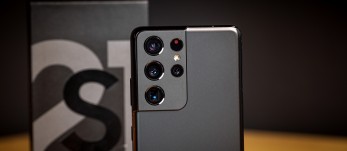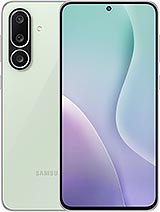Exynos 2100 vs Snapdragon 888: Battery testing the Samsung Galaxy S21 Ultra versions
Samsung has been releasing two versions of most of its premium smartphones in recent years - one with a Qualcomm chipset and another one with its own Exynos chips.
In the Galaxy S21 family, the chipsets in question are the Qualcomm Snapdragon 888 (US&China) and Samsung's own Exynos 2100, available on every other market.
We already looked at how the two models compare in benchmarks and performance. Now it's time to see how they fare in battery life.
Here is a specs comparison between the chipsets powering the two models for reference:
| Chipset | Samsung Exynos 2100 | Qualcomm Snapdragon 888 |
| CPU | 1x 2.9 GHz – Cortex-X1, 3x 2.8 GHz – Cortex-A78, 4x 2.2 GHz – Cortex-A55 | 1x 2.84 GHz – Kryo 680 Prime (Cortex-X1), 3x 2.42 GHz – Kryo 680 Gold (Cortex-A78), 4x 1.8 GHz – Kryo 680 Silver (Cortex-A55) |
| Manufacturing node | 5nm EUV | 5nm |
| GPU | Mali-G78 MP14 (14 cores) (Vulkan 1.1, OpenCL 2.0, DirectX 12) | Adreno 660 (Vulkan 1.1, OpenCL 2.0, DirectX 12) |
| Memory support | LPDDR5, 3200 MHz, max 50 Gbit/s, max size 16GB | LPDDR5, 3200 MHz, max 50 Gbit/s, max size 16GB |
| Storage | UFS 3.1 | UFS 3.0, UFS 3.1 |
| Multimedia support | Max display res: 4096 x 2160, Video capture: 8K@30fps, 4K@120fps; playbak: 8K@60fps | Max display res: 3840 x 2160, Video capture: 8K@30fps, 4K@120fps; playbak: 8K@60fps |
| Neural processor (NPU) | Triple-core NPU (up to 26 TOPS) | Hexagon 780 26 TOPS |
| Modem | LTE Cat. 24, up to 3000 Mbps down, 422 Mbps up; 5G SA/NSA/Sub6/mmWave, up to 7.35 Gbps down, 3.67 Gbps up | LTE Cat. 22, up to 2500 Mbps down, 316 Mbps up; 5G SA/NSA/Sub6/mmWave, up to 7.5 Gbps down, 3 Gbps up |
The Exynos 2100 and Snapdragon 888 versions of the Samsung Galaxy S21 Ultra have nearly identical battery endurance, showing only slight variance, hardly-noticeable in real-world use.
To be fair, this is not an entirely new development. Other battery comparisons have already arrived at essentially the same conclusion. Mind you, this does not necessarily negate nor contradict the fact that at peak performance levels the Exynos 2100 seems to outpace the Snapdragon 888 slightly, but with the caveat of being about 26% less efficient in a performance per watt race at its higher clock speeds. You can read more about that here.
The thing is that in real-world use, which our proprietary battery endurance test suit tries to simulate, the phone is never really pushed to the max. It's a marathon, not a sprint. Here are the new battery endurance results as achieved by the Snapdragon 888 unit:

And here are our original ones, as published in the full review of the Samsung Galaxy S21 Ultra, done on our original Exynos 2100 unit.

Our battery tests were automated thanks to SmartViser, using its viSerDevice app. The endurance rating above denotes how long a single battery charge will last you if you use the Samsung Galaxy S21 Ultra 5G for an hour each of telephony, web browsing, and video playback daily. We've established this usage pattern so that our battery results are comparable across devices in the most common day-to-day tasks. The battery testing procedure is described in detail in case you're interested in the nitty-gritty. You can check out our complete battery test table, where you can see how all of the smartphones we've tested will compare under your own typical use.
It is important to note a few things about the testing methodology. The standby tests were conducted with the best possible network signal, in the default state of the S21 Ultra, namely with S-Pen on and AOD off.
The on-screen tests were done in native 1440p resolution with Adaptive refresh rate mode turned on, while constantly monitoring the actual refresh rate with Android 11's built-in tool.
Our web browsing script refreshes pages every 10s, and every refresh triggered a spike in the refresh rate to 120Hz, which then dropped back down to 60Hz 1-2s later. We reckon that's a behavior fairly representative of real-world use - you swipe on the screen, refresh rate shoots to 120Hz, you then read for a bit, it goes down.
As for the video playback, the phone maintained a 48Hz refresh rate throughout the test - since it does actually do that when playing back 24fps content, we think that this, too, is a good representation of real-life usage.

For those of you hankering for more details on the numbers themselves, we'll start with the two on-screen tests - web browsing and offline video playback. The web browsing result is so close between the two units that it is easily within the margin of error. The same is mostly true for the offline video playback result.
If we are into nitpicking, it does seem that the Snapdragon 888 was a little bit more power-efficient in decoding our h.264 test clip. Really nor by much, though.
This is the perfect time to remind you of Samsung Display's outstanding achievement in creating a new breed of more energy-efficient OLED panels, starting with the Galaxy S21 Ultra.

Standby times between the two handsets were nearly identical, which is great news since standby represents a big chunk of what a handset typically does on a daily basis.
The only notable difference we saw was in the call tests. Again, the difference is not huge by any stretch of the imagination, but it still caught our eye, especially since the common consensus seems to be that Qualcomm's X60 5G modem is a bit more efficient than Samsung's Exynos one. However, those claims are mostly related to efficiency in 5G network connectivity. Our call test is deliberately executed over a 3G or 4G connection to keep it comparable to older tests as much as possible.

In any case, this year the difference between the Exynos 2100 and Snapdragon 888 versions of the Galaxy S21 Ultra seems to be nearly intangible in practical terms. Hopefully, this marks the beginning of a new equality trend in camp Samsung for good.
Related
Reader comments
- Anonymous
- 11 Sep 2021
- f37
Go into the recovery and clear cache. Some say to do this after each update but probably do it after a major update. There's videos on YouTube about how to go into recovery and pretty straightforward. Your battery life is very bad for such limit...
- Saleh
- 03 Sep 2021
- 6vt
Same here man!! I have the exact same complaint its like you read my mind. Any suggestions?? Did you reach any solution to this?
- TheConvolutedTeen
- 12 Aug 2021
- 9ad
I get around 7.5 hrs to 9.5 SOT with WiFi only . Location is always on, with adaptive theming and most of my screen time is Instagram. Its the Exynos version. With just 4G, i get around 7.5-8 hrs of SOT. Pretty solid battery life.








 Samsung
Samsung OnePlus
OnePlus Samsung
Samsung Honor
Honor Samsung
Samsung


